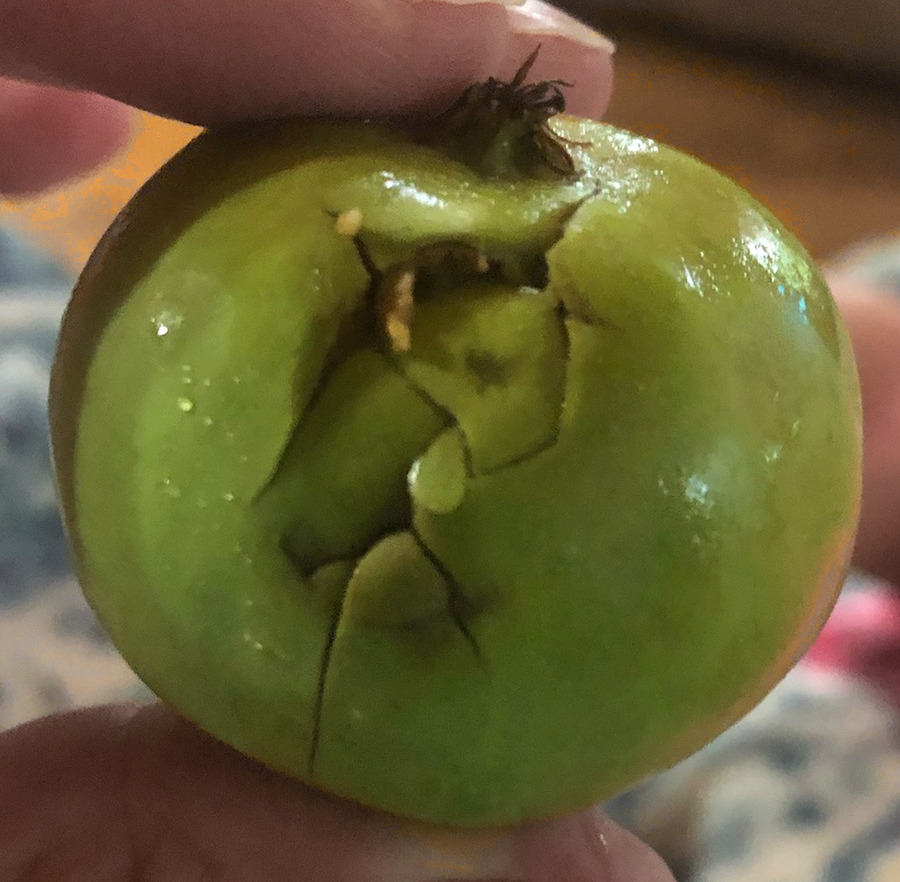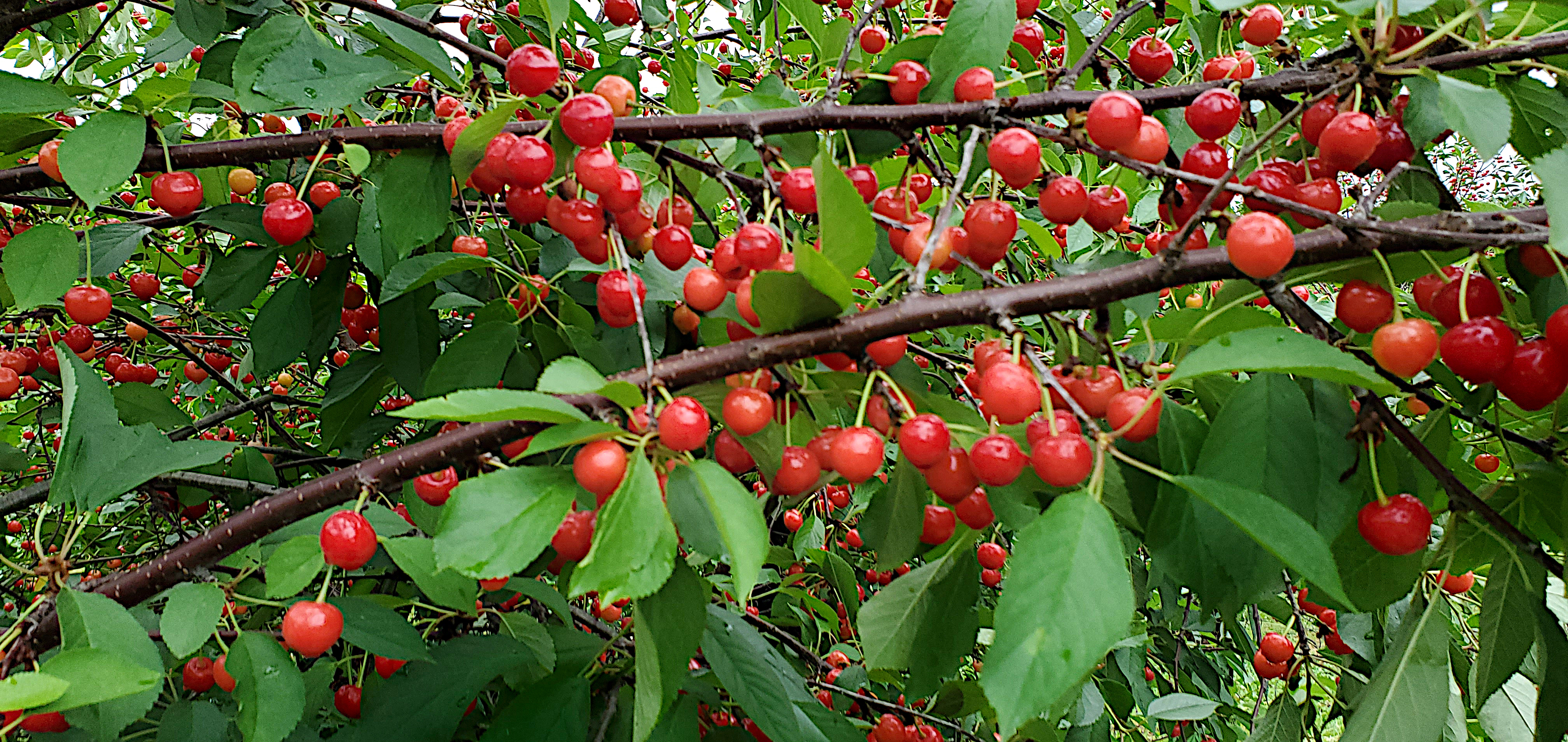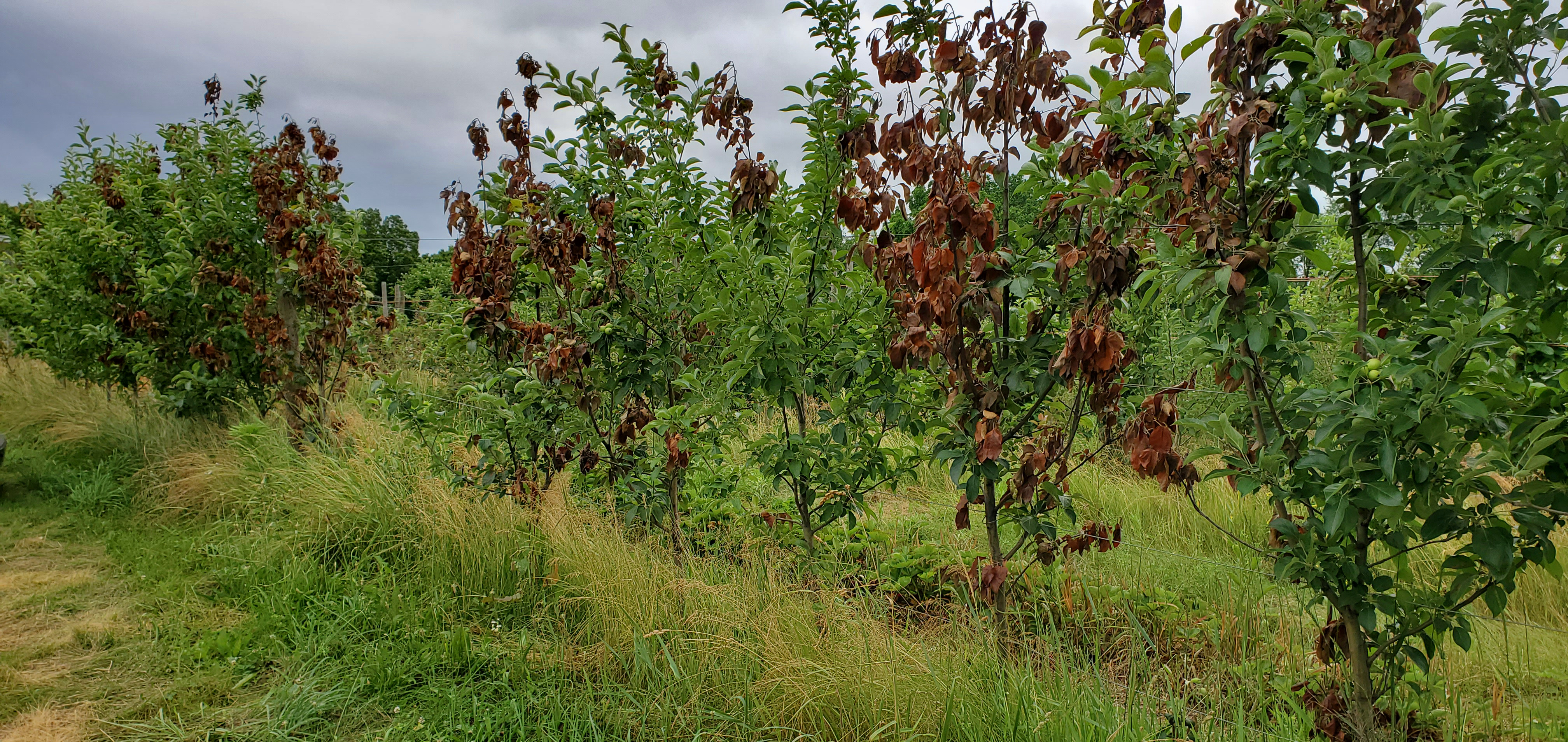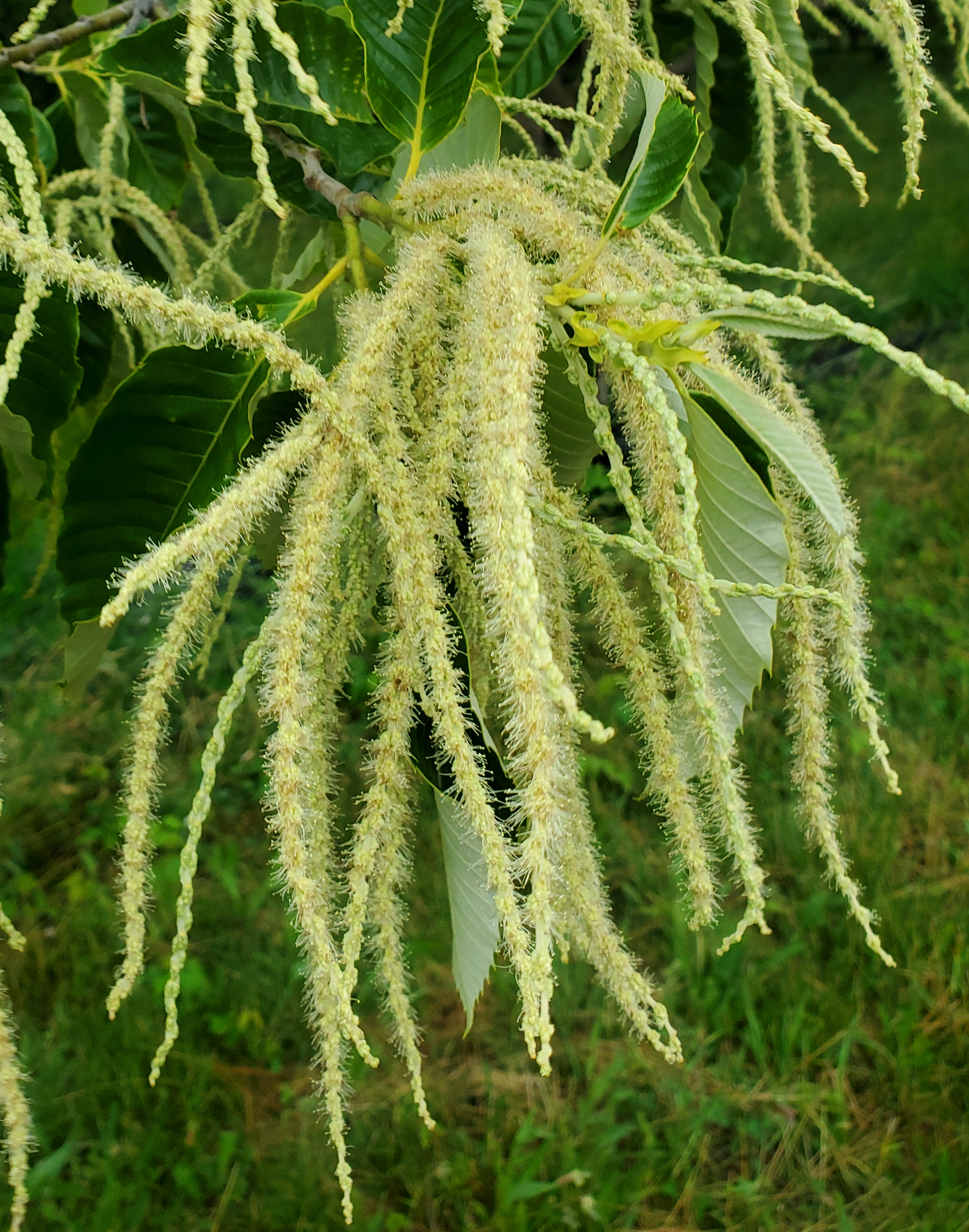Southwest Michigan fruit update – June 22, 2021
Sweet cherry harvest is underway. Other small fruits are harvesting in southern parts of the region.

Weather
Last week began cool with high temperatures in the 70s and lows in the 50s. A high pressure system brought increasing temperatures on Thursday. Several waves of showers and storms passed through southwest Michigan, beginning Friday morning, and continued into Monday. Total rain amounts for the week were 2.5-3 inches. The most severe storms came on Sunday evening through early Monday morning. Some areas experienced hail up to 1-1/4 inches in size and high wind gusts over 60 miles per hour.

The storms on Sunday and Monday accompanied a cool down. Daytime highs in the high 60s started this week off. Temperatures will increase to a more seasonable mid-70s for the rest of the week. High humidity and chances for rain begin Friday and continue through the weekend. This should increase high temperatures into the 80s and lows into the 60s. The best chances for rain are Friday and Saturday.
Even with the recent rains, soil conditions are very variable with soil moisture levels still low in some areas. Most of Michigan is in a moderate to severe drought. Most of southwest Michigan, except the southern portions of Berrien and Cass counties is now in D2 (severe) drought condition. The 2 to 3 inches of rain this weekend should alleviate some of the stress. Prepare to resume their irrigating as the soils begin to dry out. We are still far behind our seasonal averages for moisture and the long-term forecast is for warmer and drier conditions through the summer.
With the seasonal week, we picked up an average number of growing degree days (GDD) last week: 183 GDD base 42 and 130 GDD base 50. We are 130 GDD ahead of the five-year average.
|
Southwest Michigan GDD summary from March 1 - June 20, 2021 | |||
|---|---|---|---|
|
Station |
GDD 42 F |
GDD 45 F |
GDD 50 F |
|
Benton Harbor (SWMREC) |
1504 |
1277 |
951 |
|
Lawton (Lawton) |
1532 |
1302 |
964 |
|
Fennville (TNRC) |
1340 |
1126 |
824 |
|
Average for the SW region |
1486 |
1260 |
934 |
|
Average last week |
1303 |
1098 |
805 |
Tree fruit
Rain over the past two weeks have been above this season’s average, initiating several recent disease infection events. Even with these recent rains, soils are still dry in some areas. San Jose scale males began showing up in the Trevor Nichols Research Center trapline on May 24. Crawler emergence is approximately 400 GDD base 51 F after biofix, which should be occurring in much of the region last week and this week.
Apricots are 1.5 inches in diameter with hard pits. The crop is very good at some sites and poor at others. Dry conditions have not been very favorable for bacterial spot. Copper is about the only bactericide labeled for apricot, and most labels do not support post bloom use.
Peach and nectarine pits are hardening and fruit are starting to grow again. Early season varieties such as Rich May, PF1 and Harbinger are starting to develop red blush. Hand thinning is underway. Fruit susceptibility to bacterial spot decreases after pit hardening. Bacterial spot symptoms are still relatively rare. Fruit entries by oriental fruit moth are easier to find. Tarnished plant bug feeding on fruit is still ongoing.
In cherries, early season sweet cherries are being harvested. Tart cherries are red in Berrien County. Harvest should begin next week. Apply ethephon when fruit is in stage III of growth, when the least developed fruit turn straw colored. If ethephon is applied too early, the green fruit may stop growing and the stems stay attached resulting in the harvest of green cherries with attached stems. Since the early spring was so dry, cherry leaf spot symptoms are scarce for this time of year.

In plums, Japanese plums are at 30 millimeters. European plums are at 25 millimeters. June drop of green fruit continues. Crop prospects for plums look okay to only fair, depending on the site. Black knot control is still ongoing until terminal growth slows, generally at the end of June. Current warm wet conditions are conducive to bacterial spot infections.
Apple primary scab season is estimated to be over. Summer NAA treatments to encourage return fruiting generally start about five weeks after full bloom, approximately in early June in central Berrien County. Fire blight symptoms are easier to find, but still relatively rare. Codling moth, obliquebanded leafroller and oriental fruit moth flights and mating are continuing.

Small fruit
Grape bloom is ending. Labrusca and most hybrid grapes not impacted by the radiation freezes the first week of May are at buckshot to pea-size berries. There is still some scattered bloom on secondary shoots. Most vinifera cultivars are finishing or have finished bloom. May 25-27 can be used as general dates for wild grape bloom in southwest Michigan. There were several disease infection events with the weekend storms. Protectant fungicide sprays to control Phomopsis, black rot, downy mildew and powdery mildew are the management focus after bloom. Anthracnose was also recorded last week. Wine grape growers will also want to include botrytis in their disease management plans.
Blueberries have green fruit and beginning to show some blush. Some early varieties in southern Berrien County are beginning to show first blue color. Now that fruit is sizing, the crop is looking better. Disease control should focus on anthracnose infections to young green fruit, especially in irrigated fields. Shoot growth looks good. In fields without irrigation, the soils are extremely dry. Maintain irrigation to maintain shoot and fruit growth.
Cherry fruitworm and cranberry fruitworm egglaying is ending.
MSU is participating in a USDA-funded survey asking blueberry growers about their pollination practices. If you can, please take a few minutes to fill out the survey.
Strawberry harvest continues. The heavy rains over the weekend may cause an early end to harvest in some areas.
Bramble bloom is in various stages: Raspberry bloom has ended and blackberry bloom is ending. Fruit is sizing and coloring. Raspberry harvest has begun in Berrien County.
Miscellaneous crops
Hops growth is continuing. Side shoots are growing. Some flower buds can now be seen on the side arms.
Chestnuts are blooming.

Currant harvest is beginning.
Cranberries are blooming.
Upcoming meetings
Our regular Southwest Michigan Monday Fruit IPM Updates are available online. You need to register to receive the Zoom link and password for these meetings. The webinars are free and one pesticide applicator credit is available for each meeting. We had 60 growers attending our Monday meeting last week. The final meeting this season will be on June 28.
Viticulture Field Day will be returning to an in-person event this year. The event location is 12 Corners Winery in Benton Harbor, Michigan, on July 28, 2021. This will be an all-day event beginning at 9 a.m. The traditional steak dinner and wine tasting will return. There will be limited attendance. Pre-registration is highly recommended.
Related articles
- Periodical cicadas are emerging: Should Michigan fruit growers be concerned?
- Southwest Michigan fruit update – June 15, 2021
- Summer options for controlling San Jose scale in Michigan tree fruit crops
- Michigan grape scouting report – June 16, 2021
- Pest management approaches in a winter or freeze damaged grape vineyard
- Banning black rot and Phomopsis from young grape clusters



 Print
Print Email
Email
